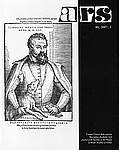
Časopis ARS 40 (2007) 1
Alexandra KUSÁ
Stratégie veľkých výstav a ich podiel na formovaní umenia „sorely“[Strategies of Major Exhibitions and Their Impact on Forming of the Art of "Sorela"]
(Resumé)
The submitted text is focused on the research of the visual art of the early Socialistic realism - in the fifties of the 20th century - which is also called socrealism, socreal, sorela, at the time when art was dictated, monitored and financed by the new political èquipe. After the February of the 1948 Czechoslovak cultural policy was based on the so-called Stalin-Zhdan doctrine in the way it had been practiced in the Soviet Russia since the middle of the thirties of the 20th century.
Cultural issues and thus also visual art are connected with the political situation therefore the selected period is closely related to events of political life. There is the 1948 February milestone on one hand when the doctrine started to be asserted in the newly formed cultural policy and gradually in specific works of art. On the other hand the period of sorela is closed by the events emanating from Stalin's death (1953). Its impact had not been applied nor confirmed in Czechoslovak meetings of the Communist party until 1956, it was the time when the Stalinist phase of the Socialism finished - personality cult was "discovered", the Association of visual artists approved more liberal statute and the Socialist art absorbed modernism into its "definitions".
Due to the above mentioned link with the cultural policy the introduction chapters of my work are dedicated to implementation of modernism and its wider relations in which it was taking form. The preview is focused in detail on determining the period and cultural-political situation, growth and spreading of the new doctrine. In the following part I study how was the art program formulated and "translated" into the definitions and instructions, and which ambitions could have been attributed to the new power. Tight union of art with the new cultural policy provides the ground for close study of visual art of the fifties of the 20th century from two angles: 1. on one hand it follows the process of institutionalizing of sorela art, 2. on the other hand it follows the set of specific visual art pieces which were created at that period according to more or less pronounced "instructions". The work examines official frameworks - strategies of the big exhibitions in which visual art existed. The strategies of big exhibitions tackled contemporary priorities and ambitions probably in the most sensitive way.
In conclusion I tried to find the answer to the most frequent question concerning sorela: that is, how far was it Russian implantation imported in together with liberation and to what degree was it a consequence of post-war culture. It is the aspect of interrupted "progressive sorela" because of what is the Socialist realism widely criticised. The doctrine of sorela was in the sense of "proletarian internationalism" implanted in the country. However, the most intensely implanted was the requirement of the pro-soviet i.e. Stalinist course of the Socialist realism (most of the people from the cultural sphere supported his own version), application of the doctrine was influenced by the local factors. In connection with the national sorela it can be literally said that there was such a thing as Slovak variant as it really was a variation of the enforced model. Slovak sorela existed in permanent triumvirate where following elements competed: development of national visual art till that date, individual understanding of sorela's image and a Soviet model. The categorizing of the visual art material was done depending on prevailing tendency. As a result there were not only Pro-Soviet art pieces but also attempts to have own way, inputs of co-called formalists, which took place on the background of the national developments and on the base of local environment and traditions. It is important to stress here that there is one fundamental difference which is sometimes neglected: sorela (meaning socialist realism of the Stalinist type) presented a completely different problem in former Czechoslovakia than the Stalinist socialist realism in Russia. The reason for that was its formation - there were different motives for its formation, different conditions and it was created in a completely different time. Development of the socialist realism was irregular and unique, also thanks to the "reform" of the year 1952 and on this very basis it can be understood as something independent even though influenced by foreign ideology.
English by A. Kusá